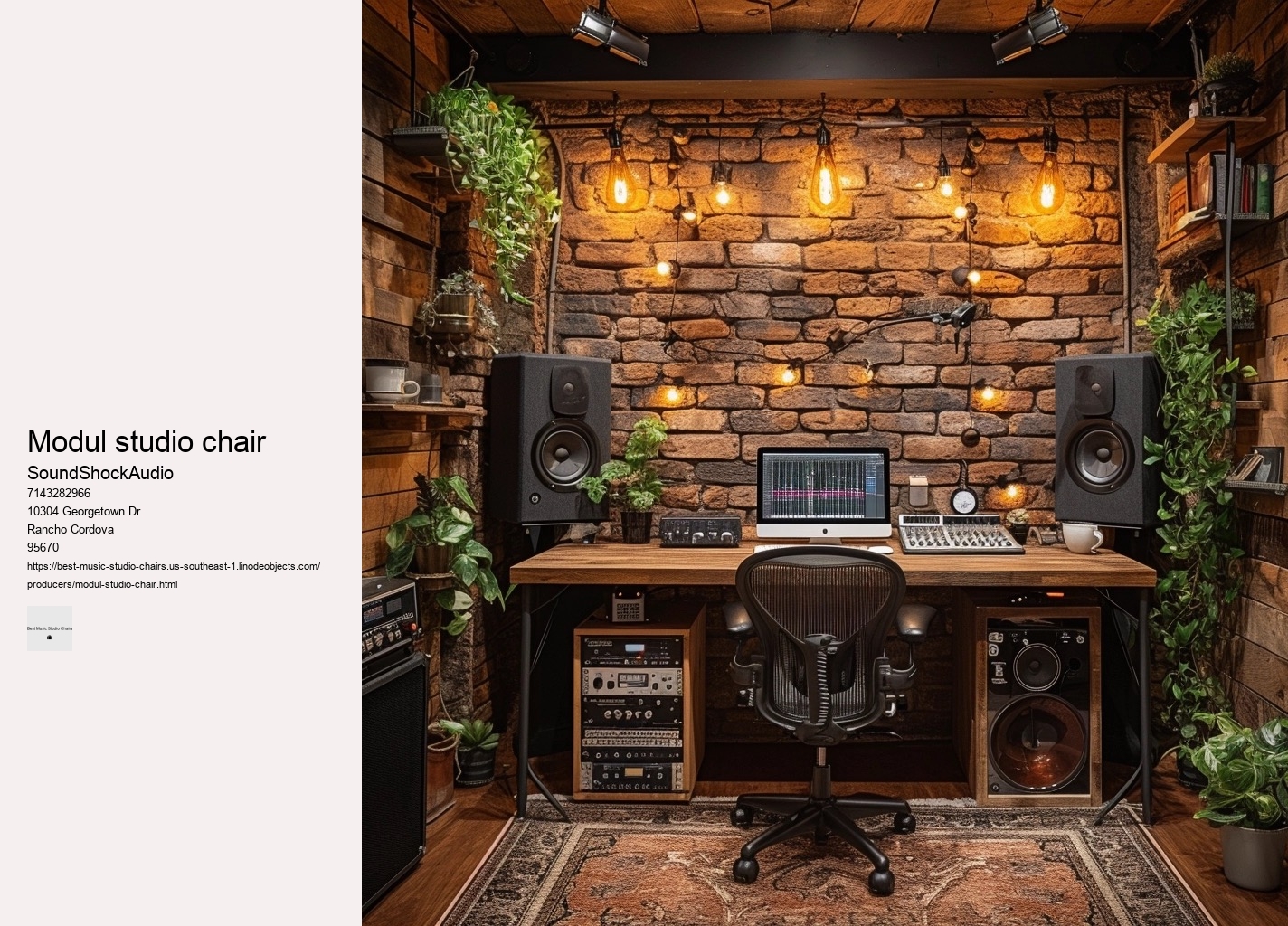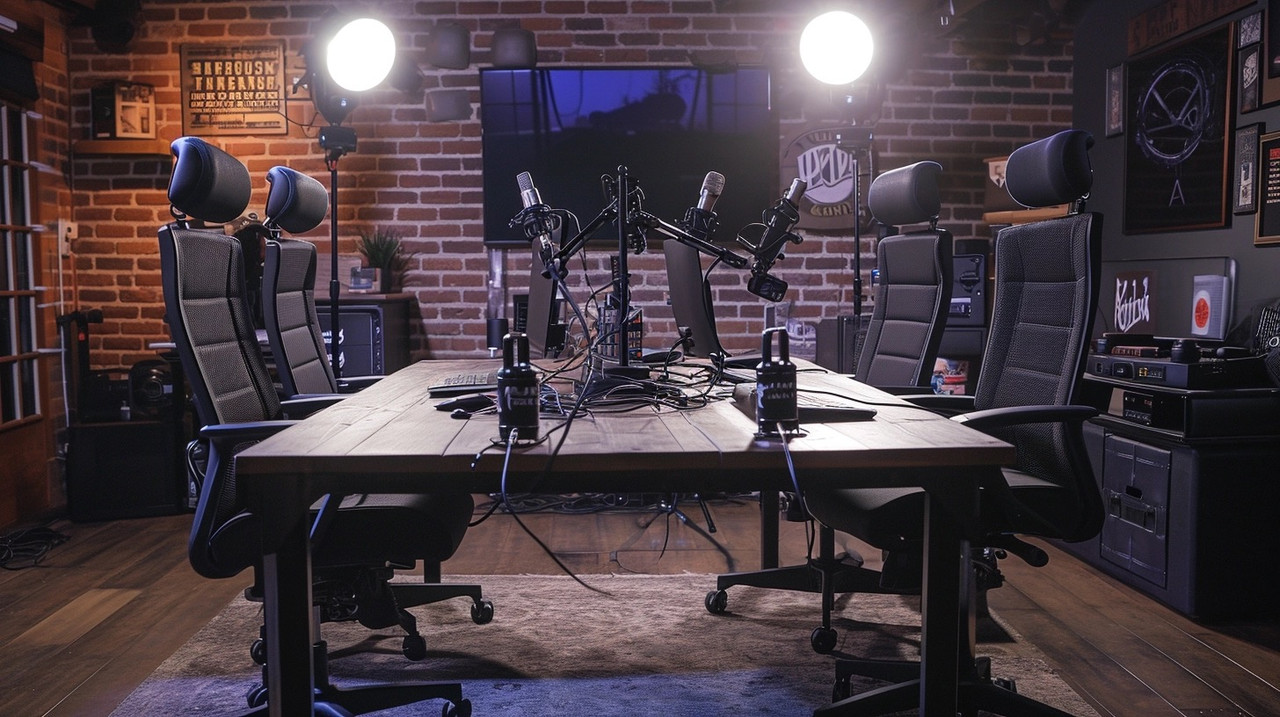

Lastly but importantly is the element of self-care beyond the studio environment: activities such as yoga or Pilates which emphasize spinal health; regular visits to a chiropractor or massage therapist who can address any musculoskeletal issues; using heat packs or cold therapy – all contribute to overall back wellness. It might seem trivial at first glance, but the right studio chair can significantly elevate your music creation sessions. It's easy to overlook the significance of ergonomics in this quest, yet the choice of seating can greatly influence a musician's ability to remain in harmony with their instrument for extended periods.
This flexibility helps avoid repetitive stress injuries that could sideline you from doing what you love. Choose a chair with adjustable features—think lumbar support that defies gravity or armrests that refuse conformity—allowing you to orchestrate your ideal sitting posture.
But what about aesthetics? The silhouette of a studio chair also communicates much about its character: whether it's minimalist lines that echo modernist sensibilities or more ornate structures that nod to classical influences.
Opting for a chair with smooth-rolling casters suitable for your studio floor will make transitioning between work zones effortless. Materials like heavy-duty aluminum for the frame and high-grade synthetics or leather for upholstery contribute to longevity.
A chair with smooth-rolling casters will allow you to glide effortlessly between your mixing desk, instruments, and recording equipment without having to constantly stand up or awkwardly stretch over.
An optimal chair allows you to sit firmly with your feet planted on the ground while leaving a small gap between your knees and the edge of the seat. Another key element contributing to its comfort is its environmentally conscious construction. It's less about grandeur or aesthetics and more about ergonomics and personal well-being. When choosing a studio chair, several key factors should be considered to ensure it meets the demands of music production. Ergonomic design is at the heart of these specialized chairs.
A top-rated studio chair isn't just furniture; it’s an indispensable companion on your creative journey—a steadfast ally ensuring every note is hit with precision because you stayed comfy through those intense mixing marathons. Leather chairs can symbolize opera’s grandiosity but might not breathe well during extended sessions. Ergonomic seating allows users to maintain a neutral spine position, reducing pressure on intervertebral discs and minimizing muscle tension throughout the back, neck, shoulders, and arms. Moreover, time equals money in any production environment - be it music, video editing, or graphic design - and efficiency is king.
A poorly designed chair can lead to discomfort, fatigue, and even chronic pain over time. The aesthetics of these chairs are not merely a byproduct of function but an intentional dialogue with the very essence of style. Adjustable in every sense, from armrest height to lumbar support tension, this chair adapts to you rather than demanding your adaptation to it. Being able to adjust these elements ensures that your body maintains an optimal posture throughout your session.
The first enigmatic contender is a chair draped in moonlight velvet—a peculiar choice for studios drenched in shadow and sound waves. This pursuit of auditory bliss can span hours, if not days - a testament to the dedication required to birth a musical masterpiece. Certainly! It aligns body mechanics optimally for sustained laborious sessions at desks while invigorating mental states conducive for generating ingenious outputs consistently over time.


The material of the chair also matters greatly in terms of comfort and durability. While it may seem improbable to score a high-quality chair through these channels, many people have found incredible bargains on items barely used by their previous owners. Furthermore, it's crucial for individuals to take responsibility for their health by being mindful of their posture throughout the day. Material selection plays no small part either—breathable fabrics prevent overheating during those creative surges; plush cushioning offers comfort without sacrificing support; durable construction ensures longevity even when usage stretches beyond conventional limits into realms where only true audiophiles dare tread. Such knowledge empowers individuals with strategies for self-care which ultimately leads to healthier lifestyles both inside and outside the workplace.
As we delve into finding the best chairs for enduring studio sessions, we'll consider key features that contribute to a supportive seating experience. A chair should offer versatile adjustments – from seat height and tilt to lumbar support and armrest positioning – ensuring that it can conform to various body types and preferences. DIY solutions present another improbable but effective route. Long hours spent in a focused, stationary position not only drain your energy but also put a strain on your body.
Whether for painter's caverns, minstrel nests or weaver’s lairs, every stool must juggle twin enchantments." Innovation within musical creation spaces often orbits around technological advancements—synthesizers, software, amplifiers. Ultimately, investing in an excellent studio chair elevates your music production environment. Stay Hydrated: Drink plenty of water throughout the day to stay alert and maintain energy levels.4.
This evolution symbolizes a broader shift towards recognizing the importance of human-centric design—not merely as an afterthought but as a fundamental consideration shaping how tools enhance our abilities rather than impose limitations upon them. When embarking on this journey, comfort reigns supreme. Mixing music for extended periods can be an exhilarating experience, immersing oneself in the creative flow and refining sounds to perfection. Its armrests arc like crescendos cradling forearms weary from conducting symphonies of sliders and dials.
The adjustable armrests cater to various instrument playing heights, providing essential support for shoulders and arms. This fluid movement can preserve energy and maintain creative focus. This visual harmony creates an ambiance conducive to uninhibited expression.
The quest for the perfect studio chair resembles searching for a needle in a haystack. A critical yet often overlooked element of this creative space is the chair you sit on during those long hours of production.
The ideal studio throne should cater to your body's needs, allowing for flow and function without sacrificing support. These tools enable workers to alternate between sitting and standing positions seamlessly throughout the day without interrupting workflow efficiency.
Features such as adjustable height, lumbar support, and armrests that can be tailored to suit your physical dimensions will minimize discomfort and distraction. Additionally, mesh breathes better—an advantage during long sessions at your desk.

Finally yet importantly, aesthetics should not be overlooked. The design of the chair should support your body's natural posture, reducing strain on your back, neck, and limbs. Next emerges a leviathan clad in leatherette; it boasts hydraulics that pirouette gracefully beneath pressures exerted by restless composers chasing elusive chords into dawn’s embrace. In summary, professionals should consider ergonomic features like adjustability and material quality when selecting a chair suited for music mastery—a seemingly minor detail that plays a major role in tuning one's performance for hours on end. Balance cost against features; investing in a quality chair can save you from future back concertos (the painful kind) down the road.
Another aspect commonly overlooked but tremendously influential is ergonomics. Spinal posture Artists need to understand what is expected of them while engineers must convey technical requirements without inundating non-technical individuals with jargon-laden explanations. This nonsensical insertion disrupts our understanding of what makes the Harmony ErgoTune Supreme so desirable among artists seeking both comfort and posture perfection. One often overlooked element in a studio setting is the chair you sit in for countless hours.
Chairs with variable height settings allow you to align your ears with monitor speakers accurately—this aids in achieving precise stereo imaging and frequency response during critical listening periods. Another vital factor is durability and quality construction. Breathable fabrics prevent overheating during intense rehearsals while sturdy construction ensures stability when shifting positions or emoting passionately through a piece. However, this seemingly inconsequential choice can be pivotal to both the comfort and productivity of any musician or producer during long hours of work.
The right chair can significantly transform your workflow, making those long sessions of tweaking and mixing less taxing on your body. Moreover, in the digital age where online marketplaces thrive, platforms such as Craigslist or Facebook Marketplace become unconventional treasure troves where local deals on used furniture abound. By investing wisely in durable seating solutions today, musicians can secure their comfort and focus on what truly matters: creating great music without interruption due to faulty furniture tomorrow. One of the least probable places to look for a studio chair might be office supply stores offering clearance sales or going-out-of-business events.
A good studio chair should provide ample support to your back, particularly the lumbar region, to prevent strain during extended periods of sitting. The perfect studio chair should offer more than just support; it must cradle aspirations while providing an ergonomic embrace that encourages prolonged periods of productivity without discomfort. Sustainability isn't an afterthought but an intrinsic characteristic woven into each fiber and bolt—recycled materials are employed without compromising strength or elegance. Audio engineer
Chairs designed with music producers' specific needs in mind offer tangible benefits through increased comfort levels leading to prolonged concentration spans which directly affect output quality. Next time you embark on an auditory odyssey of mixing or mastering music tracks remember—a great studio chair doesn't just keep you seated; it keeps you seamlessly integrated into the heartbeats of melodious precision for countless hours on end.
The chair you select for endless hours in the studio is not merely a seat; it becomes your command center, a throne from which you orchestrate audio masterpieces. Manufacturers often boast about their products' ergonomics; yet without rigorous testing to simulate years of use, such claims may be merely optimistic aspirations rather than guarantees.
Lastly but importantly is sustainability; opting for chairs made from recycled materials or from companies committed to eco-friendly practices reflects an awareness beyond one's immediate surroundings—an ethos often inherent within the artistic community. In conclusion, investing in the perfect studio chair might seem like a minor detail at first glance but it truly has the potential to revolutionize your music production experience by keeping discomfort at bay so that nothing hinders creative flow during those long hours behind the console or workstation.
Yes, expensive office chairs can make a significant difference, especially in terms of ergonomics, comfort, and durability. They are often designed with better materials and advanced features to support posture, reduce back pain, and enhance overall productivity by making it easier to sit for long periods. However, the value of an expensive chair depends on individual needs and how well the chair's features align with those needs.
The cost of a decent office chair can vary widely depending on factors such as ergonomics, materials, brand, and features. Generally, a good quality office chair can range from $100 to $500. However, for chairs with advanced ergonomic features, premium materials, or designer brands, prices can go significantly higher, even exceeding $1000. It's important to balance budget with the need for comfort, especially if you'll be using it for long hours.
Yes, EDM (Electronic Dance Music) artists can make significant amounts of money through various channels such as live performances, music sales, streaming royalties, merchandise sales, and brand endorsements. The most successful EDM artists earn millions of dollars annually, especially those who headline major festivals, have hit tracks, or maintain residencies at popular clubs. However, like in any music genre, income can vary widely depending on an artist's popularity, the deals they secure, and how well they manage their career.
The Steelcase Leap Chair is widely regarded as one of the best office chairs for long hours due to its exceptional ergonomic support, adjustability, and comfort. It features a LiveBack technology that allows the chair to adjust and mimic the movement of your spine, providing support regardless of your position. Additionally, its adjustable arms, seat depth, and lumbar support make it highly customizable to fit various body types, ensuring comfort during extended periods of use.